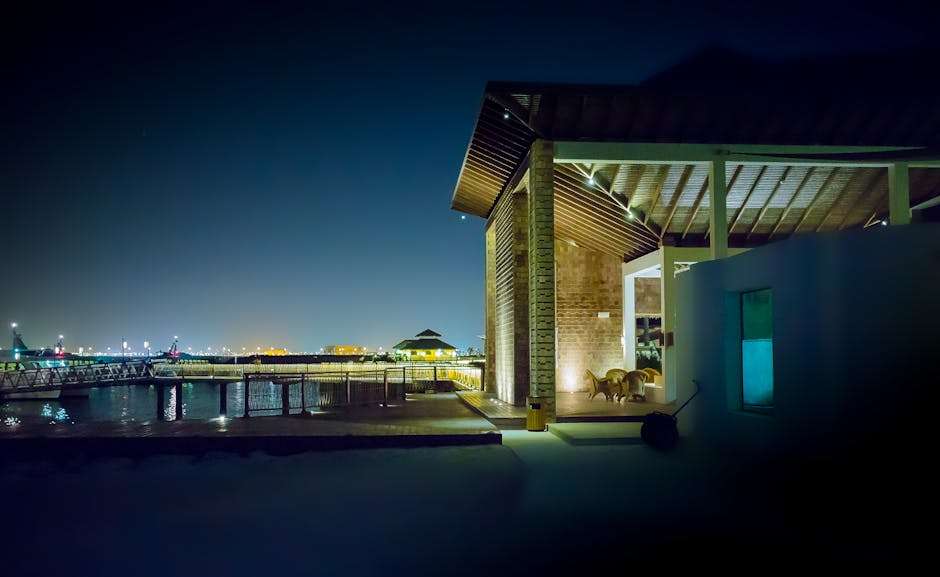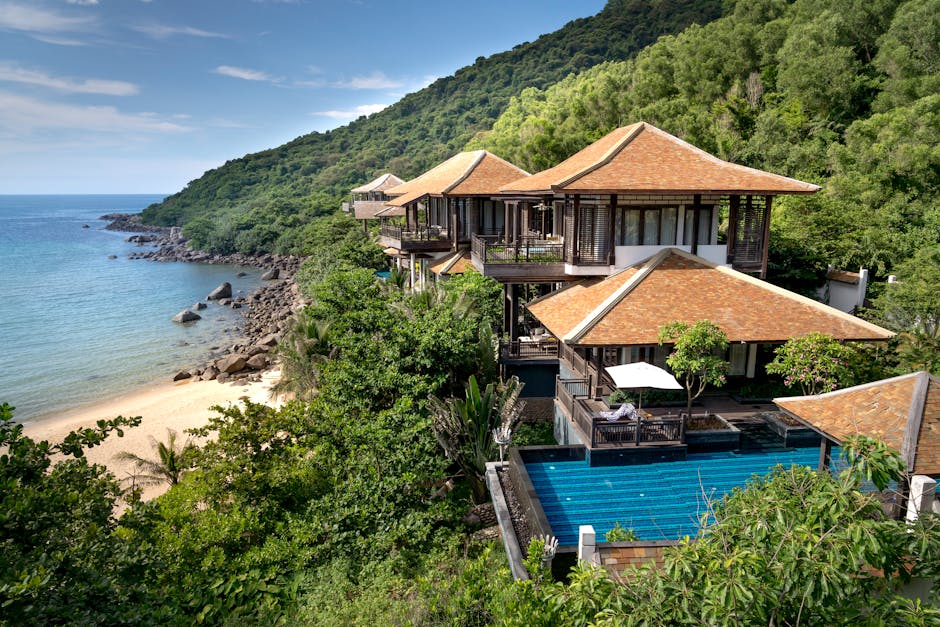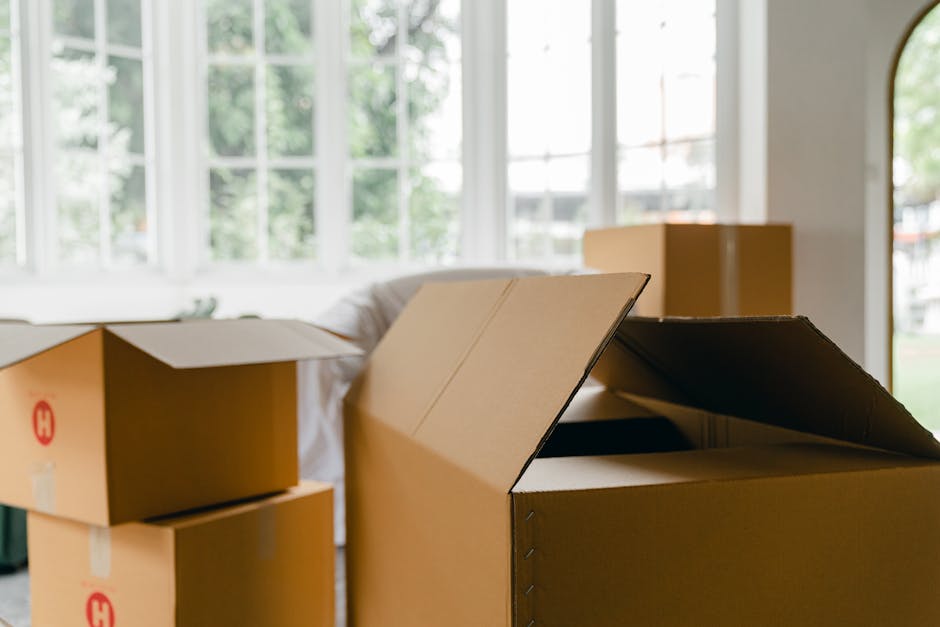Everything You Need to Know About Vacation Property Insurance

Introduction
When it comes to second home property insurance, understanding your options is essential. Whether it’s a cozy cabin in the mountains or a beachfront retreat, insuring a vacation home is different from insuring your primary residence. Here’s the short version:
Higher Risk: Second homes are unoccupied for long periods, increasing the risk of burglary and undetected damage.Extra Coverage Needed: If you rent out the property, specific coverage like landlord or short-term rental insurance is essential.Customizable Plans: Tailored insurance policies can cover natural disasters, theft, and liability claims.Cost Considerations: Factors affecting cost include location, type of property, and coverage needs.
Now, let’s dive deeper, starting with what second home property insurance entails.
What is Second Home Property Insurance?
Second home property insurance is a specialized type of insurance designed to protect properties that aren’t your primary residence. Whether it’s a vacation home, a rental property, or a seasonal retreat, this insurance ensures your property is covered against various risks.
Coverage Overview
Just like your primary homeowners insurance, second home property insurance covers:
Damage to the Structure: This includes protection for the physical building itself, such as walls, roof, and foundations.Personal Property: Items inside the home, like furniture, appliances, and personal belongings, are protected.Personal Liability: In case someone gets injured on your property, this coverage helps with legal fees and medical costs.
Primary Residence vs. Second Home Insurance
While your primary residence is covered under a standard homeowners policy, this coverage does not extend to a second home. Each property must have its own policy because the risks associated with a vacation or rental home are different.
Named Perils
Second home insurance typically operates on a named perils basis. This means it only covers specific risks listed in the policy, such as:
FireTheftWindstormVandalism
For instance, if you own a lake house, your policy might include coverage for flooding, which is a higher risk in such locations.
Structure and Contents
Structure Coverage: This protects the building itself from damage. Whether it’s a beach house or a mountain cabin, the policy ensures that the structure is covered against the named perils.
Contents Coverage: This covers personal belongings inside the home. For example, if you keep valuable items like electronics or furniture in your vacation home, this coverage ensures they are protected.

Why You Need It
Second homes are often vacant for long periods, making them more susceptible to risks like burglary or unnoticed damage. Without proper insurance, you could face significant financial losses.
Case Study: Florida Beach House
Take the example of a Florida beach house. Due to its location, it’s at higher risk for hurricanes and flooding. A standard homeowners policy wouldn’t suffice. Instead, a tailored second home property insurance policy would cover these specific risks, ensuring the property is protected even when it’s unoccupied.
Having the right insurance for your second home gives you peace of mind, knowing that your investment is safeguarded against unforeseen events.
Next, we’ll explore why second home insurance tends to be more expensive.
Why is Second Home Insurance More Expensive?
Riskier Properties
Second homes are often considered riskier by insurers. Why? Because they are usually vacant for long periods. An empty house is more susceptible to issues like leaks, fires, or vandalism going unnoticed. According to the Insurance Information Institute, these risks make second homes more likely to result in claims, which drives up the cost of insurance.
Waterfront Location
Many second homes are located in picturesque but risky areas—think beach houses or lakefront cabins. These locations are more prone to natural disasters like hurricanes, floods, or mudslides. For instance, a home on the California coast is at higher risk for wildfires and earthquakes. This increased risk translates to higher premiums. The research shows that premiums for such homes can be two to three times higher than those for primary residences.
Limited Coverage
Second home insurance often provides limited coverage compared to primary home insurance. This is because insurers assume you keep fewer valuable items in a vacation home. However, the limited coverage can still be costly due to the higher risk factors involved. It’s crucial to read the fine print to understand what is and isn’t covered to avoid unpleasant surprises later.
Named Perils
Most second home insurance policies are based on named perils, meaning they only cover specific risks listed in the policy. This is different from comprehensive policies that cover all risks except those explicitly excluded. Named perils can include things like fire, windstorm, and theft, but may not cover everything you need. For example, flood damage often requires a separate policy, especially for homes in high-risk areas.
Insurance Information Institute Insights
The Insurance Information Institute notes that second homes are more expensive to insure due to their higher risk profiles. Insurers factor in the likelihood of claims and the cost of potential damages when setting premiums. The more risks associated with the property, the higher the cost of insurance.
Understanding why second home insurance is more expensive helps you make informed decisions. Next, we’ll discuss the different types of coverage available for your second home.
Types of Coverage for Second Homes
When it comes to second home property insurance, understanding the types of coverage available is crucial. Each type offers different levels of protection, so it’s important to choose the right one for your needs.
Replacement Cost
Replacement cost coverage pays to rebuild or repair your vacation home to its original state using materials of similar quality. This is important if you want to avoid out-of-pocket expenses for repairs after a loss. For example, if a storm damages your roof, replacement cost coverage ensures it gets repaired with materials of the same quality, without considering depreciation.
Actual Cash Value
Actual cash value (ACV) coverage, on the other hand, takes depreciation into account. This means the insurer will pay you the current market value of the damaged property, which could be less than what you originally paid. While ACV policies are generally cheaper, they can leave you covering a significant portion of the repair costs yourself.
Extended Replacement Costs
Extended replacement cost coverage goes a step further. It covers the cost to rebuild your home even if the expense exceeds your policy limits. This can be incredibly valuable in situations where construction costs unexpectedly rise, such as after a natural disaster when demand for building materials and labor skyrockets.
Personal Property
Most second home insurance policies also include personal property coverage. This covers the belongings inside your vacation home, such as furniture, electronics, and clothing. Make sure to take an inventory of your personal items and their value to ensure you have adequate coverage.


Liability Protection
Liability protection is essential if someone gets injured on your property and decides to sue you. This coverage helps pay for legal fees, medical bills, and any settlements. For example, if a guest slips on your icy driveway and breaks a leg, liability coverage can protect your financial assets from a hefty lawsuit.
By understanding these different types of coverage, you can make an informed decision about which policy best suits your needs. Next, we’ll explore how to boost your vacation home’s protection with additional policies and features.
Boosting Your Vacation Home’s Protection
When it comes to protecting your vacation home, a few extra steps can make a big difference. Let’s dive into some key options: personal umbrella policy, flood insurance, security features, and bundling discounts.
Personal Umbrella Policy
A personal umbrella policy (PUP) provides an extra layer of liability protection. This is especially useful if your vacation home is a high-risk property. For instance, if a guest is injured at your vacation home and sues you for $1 million, but your homeowner’s insurance only covers $500,000, a PUP can cover the remaining $500,000.
However, be aware that some insurers might require that you don’t rent out the property for the umbrella policy to apply. Always check with your insurance provider for specific requirements.
Flood Insurance
If your second home is near a body of water, consider flood insurance. Standard homeowners insurance typically does not cover flood damage. According to the National Flood Insurance Program (NFIP), flood insurance is a separate policy that covers damages caused by flooding.
For example, if you own a waterfront property, flood insurance can help you recover from damages caused by rising water levels. This insurance is crucial for homes in flood-prone areas.
Security Features
Installing security features can lower your insurance premiums. Features like security systems, cameras, and smoke detectors can make your home safer and reduce the risk of theft or damage.
Discuss any special safety features with your insurer to take advantage of potential discounts. For instance, a home with a state-of-the-art security system might qualify for a lower premium, making it a cost-effective way to enhance your property’s protection.
Bundling Discounts
One way to save on your second home insurance is through bundling discounts. If you purchase multiple policies from the same insurer, such as auto and home insurance, you may qualify for a discount.
For example, if you already have car insurance with a particular company, adding a second home insurance policy might reduce your overall insurance costs. Always ask your insurer about bundling options to maximize your savings.
By considering these additional protections, you can ensure your vacation home is well-guarded against various risks. Next, let’s look at the different insurance options for renting out your vacation home.
Insurance for Renting Out Your Vacation Home
Renting out your vacation home can be a great way to earn extra income, but it also comes with its own set of risks and insurance needs. Here’s what you need to know about second home property insurance when you rent out your vacation home.
Rental Scenarios
Different rental scenarios require different types of insurance coverage:
One-time rentals: If you only plan to rent out your home once, your existing homeowners insurance may extend to cover this period. However, some insurers might require an endorsement to your policy.Frequent short-term rentals: If you rent out your home multiple times to different guests, this is often considered a business activity. You may need a business policy to ensure coverage.Long-term rentals: If you lease your home to one person for an extended period, you’ll likely need a landlord insurance policy.
Business Policy
When renting out your second home frequently, standard homeowners insurance usually doesn’t provide sufficient coverage. A business policy is designed to cover the unique risks associated with running a rental business. This policy typically includes:
Liability protection: Covers legal fees and damages if a tenant or guest gets injured on your property.Property damage: Covers repairs or replacements if the property is damaged by tenants.
Landlord Insurance
For those renting out their vacation home for longer periods, landlord insurance is essential. This type of policy generally includes:
Dwelling coverage: Protects the structure of your home from damage caused by covered perils like fire or wind.Personal property: Covers items you own that are in the rental property, like appliances or furniture.Liability protection: Covers you if a tenant sues over an injury or damage.Loss of rental income: Compensates for lost rental income if the property becomes uninhabitable due to a covered peril.
Rent Loss Insurance
Rent loss insurance is a valuable add-on for landlords. It covers the loss of rental income if your property becomes uninhabitable due to a covered event, such as a fire or severe storm. This ensures you still receive income even when your property is under repair.
For instance, if a storm damages your vacation home and it takes two months to repair, rent loss insurance would cover the rental income you lose during that time.
By understanding these insurance options, you can protect your investment and ensure you’re covered in various rental scenarios. Next, let’s explore the factors affecting the cost of second home insurance.
Factors Affecting the Cost of Second Home Insurance
When it comes to second home property insurance, several factors can influence the cost. Understanding these can help you better prepare and budget for your vacation home insurance.
Location
The location of your second home plays a significant role in determining your insurance premiums. For example, a property in the swamp lands of Florida will have different risks compared to a beach house in California. Homes in areas prone to flooding, hurricanes, or wildfires will generally have higher insurance costs due to the increased risk.
Example: A beach house in California might face higher premiums due to the risk of earthquakes and wildfires. In contrast, a cabin in a less risky area might be cheaper to insure.
Type of Property
The type of property you own also affects your insurance costs. A single-family home will have different insurance requirements compared to a townhome or a condo. Additionally, certain features like pools or extensive landscaping can increase your premiums because they add more risk.
Example: A sturdy cabin in the mountains might cost less to insure than a beachfront property with a pool.
Weather Risk
Weather risks are another crucial factor. If your home is in an area susceptible to natural disasters like floods or wildfires, you may need additional coverage, which can be more expensive. In some cases, you might need a separate policy specifically for those risks.
Fact: According to the National Flood Insurance Program (NFIP), flood insurance is a separate policy and is often required for homes in flood-prone areas.
Age of Property
The age and condition of your property can also impact your insurance costs. Older homes or those that haven’t been well-maintained are more expensive to insure because they are more likely to have issues that could lead to claims.
Example: An older home with outdated electrical systems might cost more to insure than a newer home with modern safety features.
Use of Property
How you use your second home can also affect your insurance premiums. If you rent out your vacation home, even part-time, you may need additional coverage to protect against rental-related risks. This could include liability coverage for guest injuries or property damage caused by renters.
Example: Renting your home through platforms like Airbnb might require a landlord insurance policy, which can be more expensive than standard home insurance.
By considering these factors, you can get a clearer picture of what to expect in terms of insurance costs for your second home. This understanding will help you make informed decisions and find the best coverage for your needs.
Frequently Asked Questions about Second Home Property Insurance
Is insurance on a second home more expensive?
Yes, insurance on a second home is generally more expensive than insuring your primary residence. This is because second homes are often seen as riskier by insurance companies. They tend to be vacant for longer periods, which increases the risk of burglary, vandalism, and unnoticed damage.
For instance, if your vacation home is in a location prone to natural disasters like Florida’s swamplands or California’s earthquake zones, your premiums will likely be higher. The Insurance Information Institute notes that homes in these high-risk areas often need additional coverage, such as flood or earthquake insurance, which can further increase costs.
Does an umbrella policy cover a second home?
Yes, an umbrella policy can cover a second home, but it primarily focuses on liability claims. This means it provides extra liability protection beyond what your standard homeowners policy offers. If someone gets injured on your property and sues you, the umbrella policy can cover the additional costs once your primary policy’s limits are exhausted.
The NAIC (National Association of Insurance Commissioners) suggests that an umbrella policy is a good idea if you have significant assets to protect. For example, if your homeowners insurance covers up to $500,000 in liability but you’re sued for $700,000, your umbrella policy would cover the remaining $200,000.
What are the 2 types of property insurance?
The two main types of property insurance are homeowners insurance and renters insurance:
Homeowners Insurance: This covers the structure of your home, personal property, and liability protection. It also includes named perils like fire, theft, and certain natural disasters. For second homes, you might need a separate policy specifically designed for vacation properties, as standard homeowners insurance may not cover these adequately.
Renters Insurance: This type of insurance is for tenants. It covers personal belongings and provides liability protection but does not cover the structure itself, as that is the landlord’s responsibility.
In addition to these, you might need specialized insurance like flood insurance or earthquake insurance. According to American Family Insurance, these are separate policies that cover specific risks not included in standard homeowners insurance. For example, flood insurance is often required if your property is in a flood-prone area, and it can be purchased through programs like the National Flood Insurance Program (NFIP).
Understanding these different types of insurance can help you choose the right coverage for your second home, ensuring that you are well-protected against various risks.
Conclusion
When it comes to protecting your second home, Schneider and Associates Insurance Agencies is here to help. We understand that your vacation property is more than just a house; it’s a cherished retreat from the daily grind. That’s why we offer personalized insurance solutions designed to meet your unique needs.
Our team of experts will work with you to provide tailored coverage that fits your specific situation. Whether your second home is a beachside bungalow, a mountain cabin, or a rental property, we have the right insurance options to ensure you’re covered against all potential risks.
What sets us apart is our local touch. We take the time to understand the unique challenges and risks associated with your property’s location. This allows us to offer you the best advice and insurance solutions that are both comprehensive and cost-effective.
Don’t leave your second home unprotected. Get in touch with us today to explore your options and secure the peace of mind you deserve.
Get Started with a Quote and let us help you protect what matters most.







